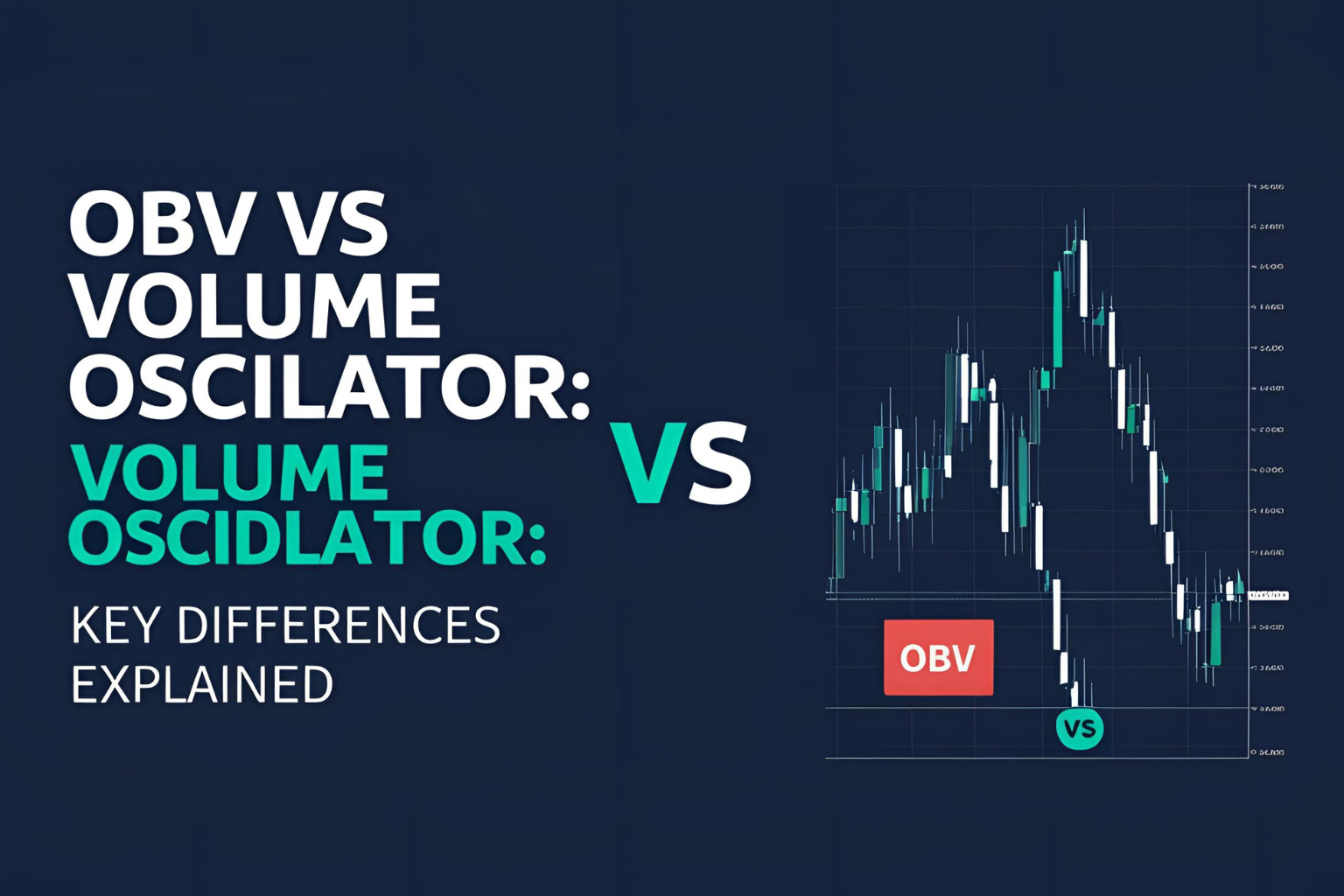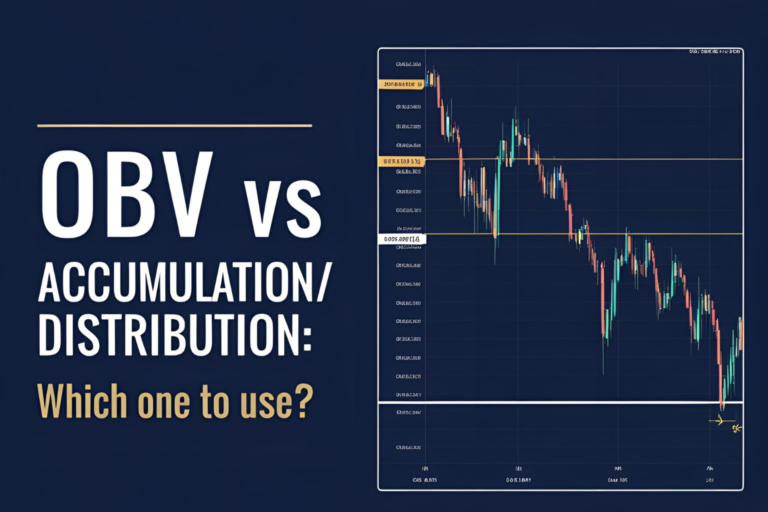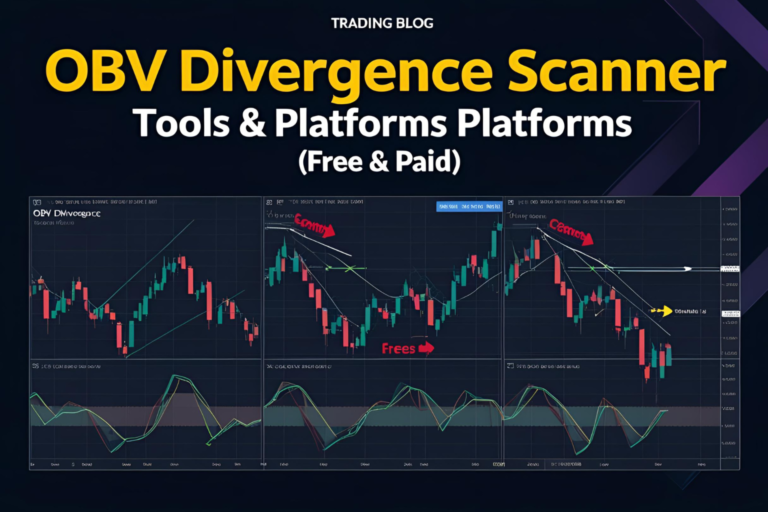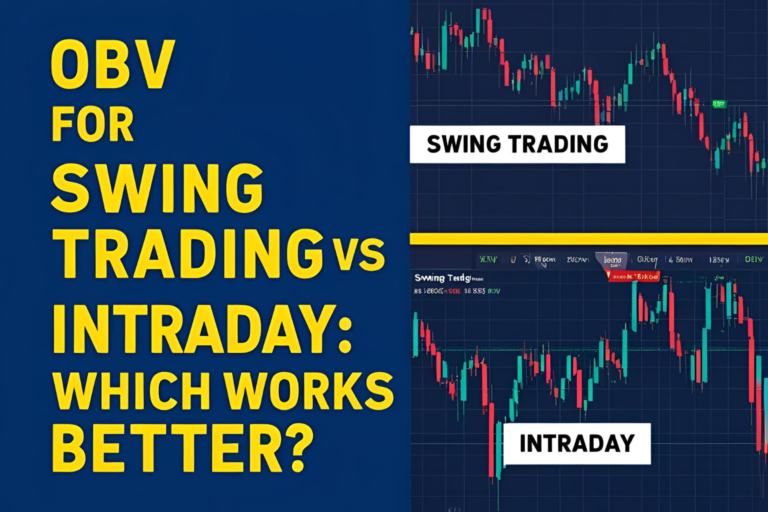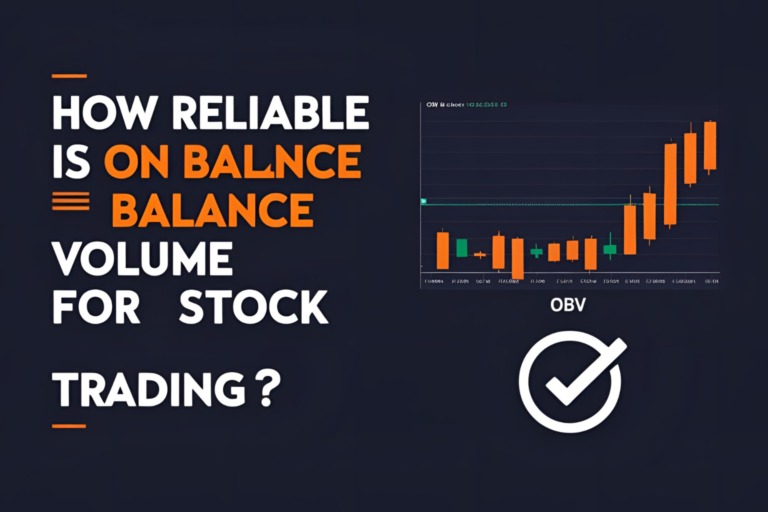OBV vs Volume Oscillator: Key Differences Explained
Both the On Balance Volume (OBV) and Volume Oscillator are popular tools used by traders to assess volume strength, but they serve different purposes. This guide explores the key differences between OBV vs Volume Oscillator, helping you decide which is better suited for your strategy.
Quick Comparison
| Feature | OBV | Volume Oscillator |
|---|---|---|
| Type | Cumulative volume trend indicator | Oscillator (difference between MAs) |
| Focus | Volume flow direction | Volume volatility or surges |
| Calculation | Adds/subtracts volume | % difference between short & long MAs |
| Signals | Divergence, confirmation | Spikes, fade, crossovers |
| Timeframe | Better for swing trading | Effective for intraday scalping |
What Is OBV?
OBV adds volume on up days and subtracts it on down days, producing a cumulative volume line.
Best used for:
- Trend confirmation
- Detecting bullish/bearish divergence
- Spotting smart money movement
What Is the Volume Oscillator?
The Volume Oscillator calculates the difference between a short-term and long-term volume moving average, often displayed as a histogram.
Formula:Volume Oscillator = (Short MA - Long MA) / Long MA × 100
Best used for:
- Detecting volume surges or drops
- Entry/exit timing in fast markets
- Confirming momentum bursts
OBV vs Volume Oscillator: Signal Behavior
OBV:
- Smooth line
- Easy to track trend direction
- Excellent for confirming breakouts
Volume Oscillator:
- More reactive to short-term changes
- Good for identifying volume spikes
- Ideal for intraday or momentum traders
Which One Should You Use?
Choose OBV if:
- You trade swing or trend-based strategies
- You want clear, long-term confirmation
- You prefer divergence signals
Choose Volume Oscillator if:
- You focus on scalping or short-term trades
- You need to see volume bursts in real-time
- You like histogram-based visual signals
Combining OBV and Volume Oscillator
Some traders use both:
- OBV for the big picture volume trend
- Volume Oscillator for entry/exit timing
This combo works well in volatile markets or earnings season, where both direction and speed matter.
Example Setup
- OBV is rising steadily → Confirmed uptrend
- Volume Oscillator spikes → Momentum building
- Entry: Breakout with both indicators aligned
- Stop: Below support
- Target: Based on recent range or risk/reward
Final Thoughts
In the OBV vs Volume Oscillator comparison, both indicators have value—but they serve different trading needs. Use OBV for directional volume strength, and Volume Oscillator for short-term intensity.
Your choice should depend on your trading timeframe and strategy.
FAQs
1. Is OBV better for trend trading?
Yes, OBV is better for confirming long-term volume trends.
2. Can I use Volume Oscillator for scalping?
Yes, it’s ideal for spotting short bursts in volume.
3. Do both indicators work on crypto?
Yes, both can be used on crypto charts with volume data.
4. Can I use OBV and Volume Oscillator together?
Yes. They complement each other well in momentum strategies.
5. Are these indicators available on TradingView?
Yes, both are available under built-in indicators or custom scripts.

